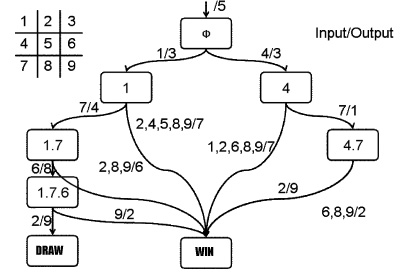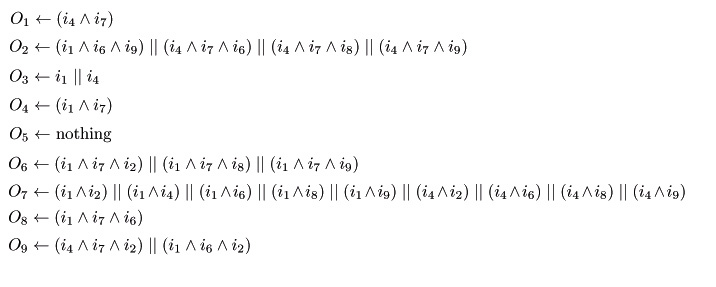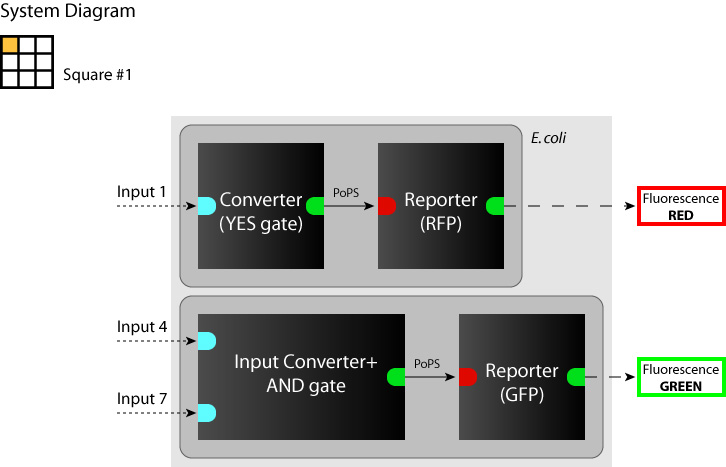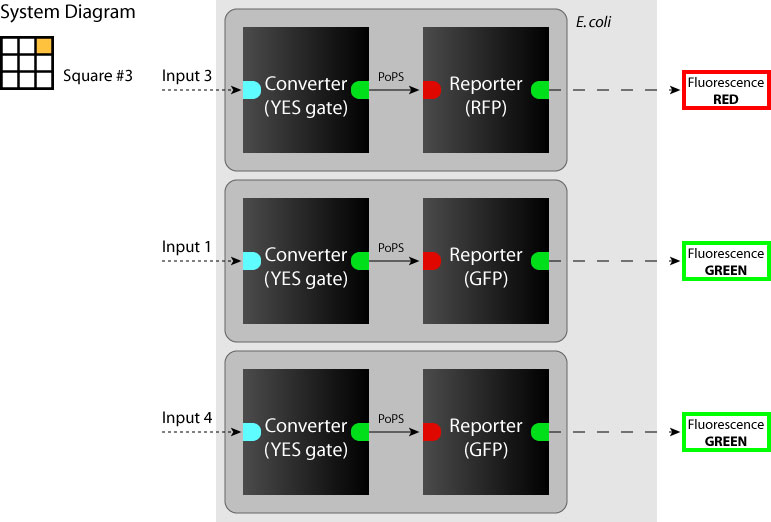Tokyo Alliance: Design/Method
From 2006.igem.org
(Difference between revisions)
| Line 46: | Line 46: | ||
====Block Diagram (Device)==== | ====Block Diagram (Device)==== | ||
| - | [[Image:Tokyo_dev_sq_1.jpg|300px|Device diagram: sq#1]] | + | [[Image:Tokyo_dev_sq_1.jpg|300px|Device diagram: sq#1]] [[Image:Tokyo_dev_sq_3.jpg|300px|Device diagram: sq#3]] |
===Construction Level=== | ===Construction Level=== | ||
Revision as of 10:15, 17 October 2006
Contents |
Systematic design concept/method
Abstract Level
State Transition Diagram
- Combination of Noughts-and-Crosses
- 362,880(=9!)[patterns] (sum up all patterns)
- 255,168 (As a game)
- 26,830 (Eliminating symmetrical pairs)
We added the following rules to reduce the number of transition functions and inputs.
- 1st
- SYANAC goes to the center of the board. (sq#5)
- 2nd
- Human goes to the specific corner(sq#1) or the edge(sq#4) of the board.
- 3rd
- SYANAC must choose sq#3
Therefore, SYANAC's conbination patterns and inputs are as follows:
- SYANAC
- 25 combination patterns(Eliminating symmetrical pairs)
- 7 types of inputs
The State Transition Diagram shown right describes SYANAC's behavior based on this rule.
Logic Gates
Here we show you the logic gates of each sq# according to the state transition.




